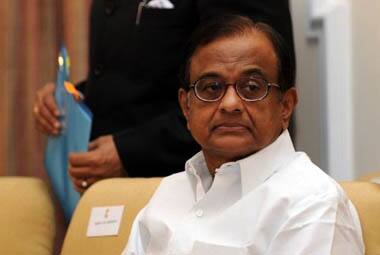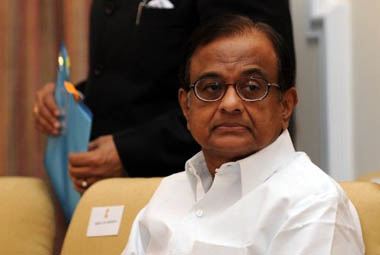By Aditi Roy Ghatak and Paranjoy Guha Thakurta
The headlines have been changing with amazing rapidity. Hardly a day goes by when there is no report on some aspect or the other of auctioning electro-magnetic spectrum in India’s scandal-ridden telecommunications industry. But the more things change the more they remain the same. There has been intense lobbying by corporate captains and industry associations with politicians chipping in. There have been sharp differences of opinion among different wings of the government.
All of which have ensured that the country’s telecom sector is as mired in uncertainty as it was on 2 February when the Supreme Court cancelled 122 licences bundled with spectrum that had been issued after January10, 2008, by the Department of Telecommunications (DoT).
After cancelling the licences, the apex court ordered the government to sell spectrum using a transparent process of public auctions. The original deadline for conducting the auctions was 2 June. On 24 April, this deadline was extended to 31 August. Current indications are that the government will approach the Supreme Court for a further extension of the deadline.
The Empowered Group of Minister (eGoM) that is looking at spectrum pricing meet again today (12 July), but there is no certainty about how soon it can get the process going. After Pranab Mukherjee demitted office as Finance Minister, on 1 July Agriculture Minister Sharad Pawar was nominated by Prime Minister Manmohan Singh to head the eGoM.
Impact Shorts
More ShortsTwo days later, he quit the post saying his name had earlier been sought to be “unnecessarily” dragged into the 2G (second-generation) spectrum scandal - he was presumably referring to reports alleging that he was close to the promoters of scam-tainted Swan Telecom (DB Realty), namely, real-estate tycoons Shahid Balwa and Vinod Goenka, who were arrested by the Central Bureau of Investigation and kept behind bars - Balwa for nearly nine months between February and November 2011 and Goenka for almost six months between April and November that year.
Home Minister Palaniappan Chidambaram now heads the eGoM, which has reportedly been downgraded from a full-fledged empowered eGoM to something less powerful: the Union cabinet will take the final call on some of its key recommendations.
[caption id=“attachment_375659” align=“alignleft” width=“380”]
 Home Minister Palaniappan Chidambaram now heads the eGoM, which has reportedly been downgraded from a full-fledged empowered eGoM to something less powerful. AFP[/caption]
Home Minister Palaniappan Chidambaram now heads the eGoM, which has reportedly been downgraded from a full-fledged empowered eGoM to something less powerful. AFP[/caption]
The Opposition, notably the Bharatiya Janata Party, has argued that Chidambaram should not head the eGoM as he was Finance Minister in 2008 when the 122 licences cancelled by the Supreme Court were issued by the DoT under the stewardship of disgraced former Communications Minister Andimuthu Raja (who spent 15 months in jail). The BJP argues that Chidambaram apparently knew everything about the hanky-panky that was going on.
The propriety of having Chidambaram as the head of the eGoM on telecom aside, the ministerial group is being called upon to resolve a number of contentious issues at a time when the Supreme Court is hearing the government’s views on a presidential reference on whether all natural resources - and not just telecom spectrum - should be priced and allotted through public auctions. These issues relate to the quantity of spectrum to be auctioned; the base/floor price of the spectrum for auction; the guidelines for the auctions; and, importantly, the “one-time” charge to be levied on telecom companies for holding spectrum in “excess” of contractual specifications.
Why is there neither a sense of direction nor speed in resolving these critical issues that will determine the future of India’s telecom sector? The answer is that the stakes involved are very high, which also explains why the lobbying is so intense.
At one level, the prevailing situation is ridiculous to an extreme. There is incontrovertible evidence of the government handing over a scarce, finite and expensive natural resource to private corporate entities in excess of what it was contractually obliged to. Having allotted excess spectrum in an unauthorised manner (read here ), the government is now dragging its feet on how to price it and charge for it. There is certainly no talk of taking away from telecom companies, spectrum that was not theirs to begin with.
Consider first the issue of how much spectrum is likely to be auctioned. The government had decided that up to a maximum of 2 x13.5 Mhz (megahertz) will be auctioned for GSM (global system for mobile communications) operators in the 1,800 Mhz band and 2x3.75 Mhz for CDMA (code division multiple access) players in the 800 Mhz band.
Having decided this, there has been no clarity on the base/floor price for auctions. Telecom operators are crying themselves hoarse that the base price proposed by the Telecom Regulatory Authority of India (Trai) is exorbitant while Trai as well as the DoT are claiming that the prices suggested are reasonable.
Interestingly, the base price issue has brought together two industry bodies that are arch rivals, the Cellular Operators Association of India (COAI) representing the GSM players, and the Association of UnifiedTelecomServiceProviders of India (AUSPI) representing the CDMA operators. Under attack for repeatedly taking decisions that have caused a loss to the exchequer, the government is now wary of again being criticised for reducing the base price for auctions.
The fun-and-games began in right earnest with the “dear friend” of the government, Samajwadi Party chief Mulayam Singh Yadav, writing a four-page letter dated 10 June to the then Finance Minister Pranab Mukherjee expressing concern that the DoT was reportedly proposing to make old incumbent players pay the new auction-discovered price without the approval of the eGoM.
Mulayam Singh’s proximity to the head of the Anil Dhirubhai Ambani Group is hardly a secret. His letter made it clear that the government should not go along with any proposal to charge for spectrum in a way that would help “older GSM operators” (read Airtel, Idea and Vodafone) at the expense of “newer players” (read Reliance Communications and Tata Teleservices).
It should be noted that Trai had recommended a base price of Rs 3,622 crore per Mhz for pan-India spectrum in the 1,800 Mhz band used for GSM services. This is 10 times higher than the cost of the licences that came bundled with 4.4 Mhz spectrum in 2008 – Rs 3,622 crore multiplied by 4.4 works out to roughly Rs 16,000 crore; the 2001 licence cost for 4.4 Mhz was Rs 1,658 crore!
Justifying the recommended base prices for auctions for being at par with international prices of spectrum, which, in European countries, range between 0.4 and 0.6 per Mhz, Trai had argued that the “recommended reserve price of Rs 3,622.16 crore per Mhz for (spectrum in the) 1,800 Mhz band works out to only 0.25 per Mhz per head of population”. The density of India’s population is far higher than that of Europe, which is probably why Trai said the market numbers suggested by the industry are low. The industry’s concern, on the other hand, has apparently more to do with affordability of mobile telecom services for vast numbers of consumers in India.
Trai has also recommended that the price of spectrum in the 800 Mhz and 900 Mhz bands should be double the price of spectrum in the 1,800 Mhz band. The regulator is, however, prepared to concede that for telecom operators using spectrum in the 800 Mhz frequency band, which is currently being used for CDMA services, a reserve price which is 1.3 times the reserve price of spectrum in the 1,800 Mhz band be fixed. “This is only where 5 Mhz spectrum is not being made available,” Trai has clarified.
However, for spectrum in the 700 Mhz band, which has similar propagation characteristics as spectrum in the 800/900 Mhz bands, the Trai, for unexplained reasons, has used a multiplying factor of four instead of two which it used for arriving at the price of 800/900 Mhz band.
Trai has also talked of the need to set up a spectrum refarming (or re-allocation) fund to compensate existing users of frequencies in the above-mentioned spectrum bands for upgradation of equipment, ostensibly as a mark of generosity for vacating spectrum. It must be noted that the base/floor would be the basis on which everyone would be charged a one-time fee for excess spectrum.
Until recently, it seemed certain that a one-time fee would be levied on all players holding excess spectrum beyond 4.4 Mhz (for GSM operators) and 2.5 Mhz for CDMA players. This would have meant a significant payout for the Anil Ambani-headed Reliance Communications. Lo and behold, there was a report headlined: “PM chucks Sibal’s one-time spectrum fee idea into dustbin” (Read here ).
Would it be churlish to read between the lines? One does know that the proposed one-time fee will work to the relative benefit of older operators who were the main beneficiaries of extra spectrum, primarily, Airtel, Idea and Vodafone, whose licences come up for renewal in 2014, if they have to pay auction-determined prices.
Newer operators such as Tata, Aircel and Reliance, among others, will have to bear a relatively higher additional financial burden because their licences are due for renewal only in 2020.
Besides Mulayam Singh Yadav, even BJP leaders have argued that the base price should not be reduced from what has been recommended by Trai. Given the all-out war that the telecom industry has launched against the government (DoT) and Trai, a possible solution could lie in bringing down the base prices for auctions - which would then become the benchmark for charging operators for their existing administered spectrum - and ensure success of the overall auction process.
Some banks are reportedly balking at the idea of financing operators who will be paying high base prices for spectrum because of apprehensions that their operations may become unviable.
What could happen, under the circumstances, is that the base price might be brought down to Rs 10,000 crore for 2x5 Mhz from the current Rs 18,000 crore recommended by the Trai with the GoM considering Trai’s reference to the international auction base price at 50 percent of the final auction price. Trai, it may be noted in this context, had chosen a factor of 80 percent for calculating the base price without assigning any reason.
The waters have got rather murky over the government’s indecision on the mechanism for charging a one-time fee for already assigned administered spectrum.
(Part 2 to follow tomorrow)
)